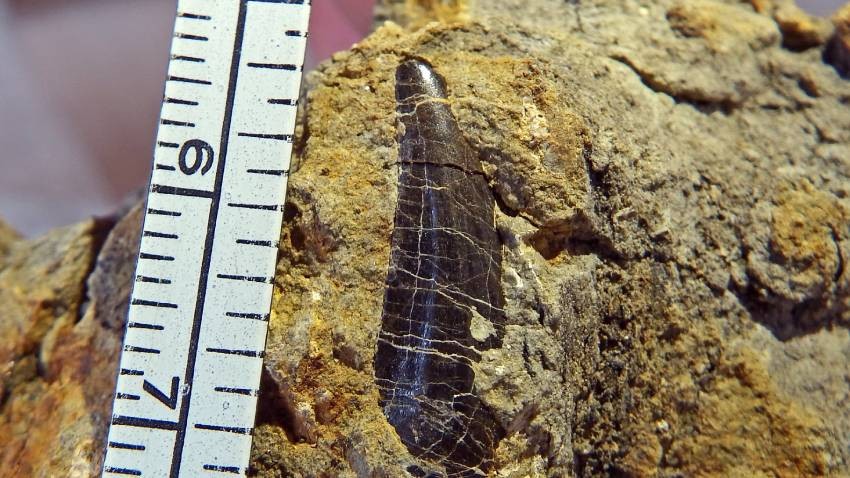What was the animal world like in the region of what is today the town of Trun more than 80 million years ago – that is the question paleontologists from the Bulgarian Academy of Sciences’ National Museum of Natural History have been trying to answer. More than 30 fossils of vertebrates have been collected as a result of their summer expedition taking place near Trun for the 7th year running. They have been dated to the late Cretaceous period.
The fossils found include bones from large reptiles, crocodile teeth, a lot of fragments, among them tortoise shells, teeth from fish no longer to be found in Europe, frog bones as well as hitherto unknown fossils which the scientists say will most probably turn out to be insect fossils from the age of dinosaurs. What all this shows, the paleontologist say, is that there once existed an exceedingly rich ecosystem in the region of Trun which will, from a scientific point of view, help fill in the blanks about life in these parts 80 million years ago.
Compiled by Gergana Mancheva
Translated and posted by Milena Daynova
Photos:National Museum of Natural History of the Bulgarian Academy of Sciences
This summer, archaeologists once again breathed life into the legends woven into the rocks of Kaliakra . Among the ruins of the once majestic fortress above the Black Sea, over 400 artefacts were discovered, shedding new light on..
The 85 th anniversary since Southern Dobrudzha returned within the bounds of Bulgaria will be celebrated with an official ceremony on 1 October in Silistra, the Bulgarian news agency BTA reports. Representatives of the local and central..
Bulgarian Patriarch Daniil met with Ecumenical Patriarch Bartholomew in Thessaloniki, the Bulgarian Patriarchate announced. The two discussed the centuries-old spiritual ties between the Ecumenical Patriarchate of Constantinople and the Orthodox..
8 November is celebrated as the Feast of Saint Michael the Archangel. According to church legend, Archangel Michael commands the whole army of angels in..

+359 2 9336 661
